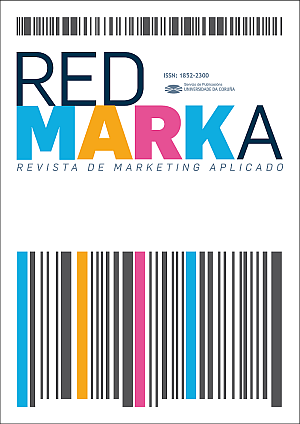Communication analysis in the promotion of way of St. James as tourism product
Main Article Content
Abstract
The Way of St. James has been consolidating over the years into one of the most important tourist attractions of Galicia. Proof of this is that many of the visitors of the Autonomous Region have come directly or indirectly through this ancient pilgrimage route.Indeed, one of the key aspects when to share the road both domestically and internationally have been the various communication and promotion campaigns developed in this regard. That is why the aim of this paper is based on analyzing the promotion that took place about the Way of St. James as a tourism product, drawing particular reference the actions developed during the last Holy Year or Xacobeo 2010. To carry out this research, the methodology used is based on the use of primary sources, which have been based on the design and conduct in-depth interviews with a group of people linked in one way or another, with the Way of St. James and its communication.
Keywords:
Downloads
Article Details
References
Aguirre, M.S. (Coord.) (2000): Marketing en sectores específicos. Pirámide. Madrid.
Bello, L.; Vázquez, R. y Trespalacios, J.A. (1996): Investigación de mercados y estrategia de marketing. Civitas. Madrid.
Bigné, E., Font, X., y Andreu, L. (2000): Marketing de destinos turísticos. Análisis y estrategias de desarrollo. ESIC. Madrid.
Bigné, E. (2003): Promoción comercial. ESIC. Madrid.
Cerviño, J. (2006): Marketing internacional: Nuevas perspectivas para un mercado globalizado. Pirámide. Madrid.
Delgado, J.M., y Gutiérrez, J. (1994): Metodología de las ciencias del comportamiento: Métodos y técnicas cualitativas de investigación en ciencias sociales. Síntesis Psicología. Madrid.
Fraiz Brea, J. A. (2009): “Nuevas estrategias de comunicación para la generación y proyección de la imagen de destinos turísticos.” Universidad de Vigo, en XIV Congreso AECIT Retos para el Turismo español. Cambio de paradigma. Gijón, 18, 19 y 20 de noviembre de 2009.
Gómez, A. (2007): “Análisis de los activos del valor de marca turística: diferenciación, gestión de imagen, calidad percibida, fidelización, el marketing de viva voz y la comunicación integrada”. Anuario Jurídico y Económico Escurialense, pp. 591-630.
Grande, I., y Abascal, E. (2000): Fundamentos y técnicas de investigación comercial. 5ª edición. ESIC. Madrid.
Iglesias, Talón y García (2007): Comercialización de productos y servicios turísticos. Síntesis. Madrid.
Marchena, M. (1993): “El Camino de Santiago como producto turístico: comunidades autónomas y promoción del turismo”. Los caminos de Santiago y el territorio. Santiago, pp. 909-936.
Reinares Lara, P. y Calvo Fernández, S. (1999): Gestión de la comunicación comercial. McGraw-Hill. Madrid.
Rey, M., et al. (2004): Fundamentos de Marketing Turístico. Síntesis. Madrid.
WEBS UTILIZADAS
http://caminodesantiago.consumer.es
http://www.santiagoturismo.com






